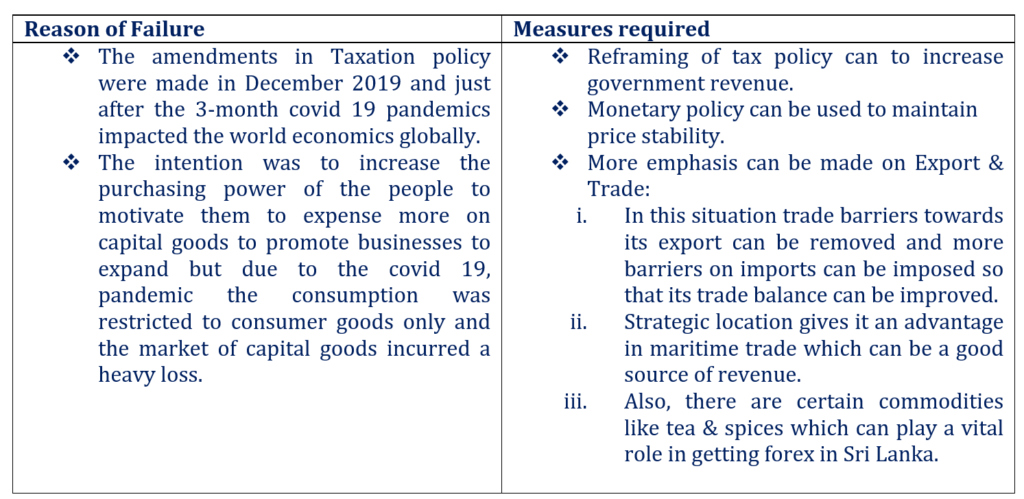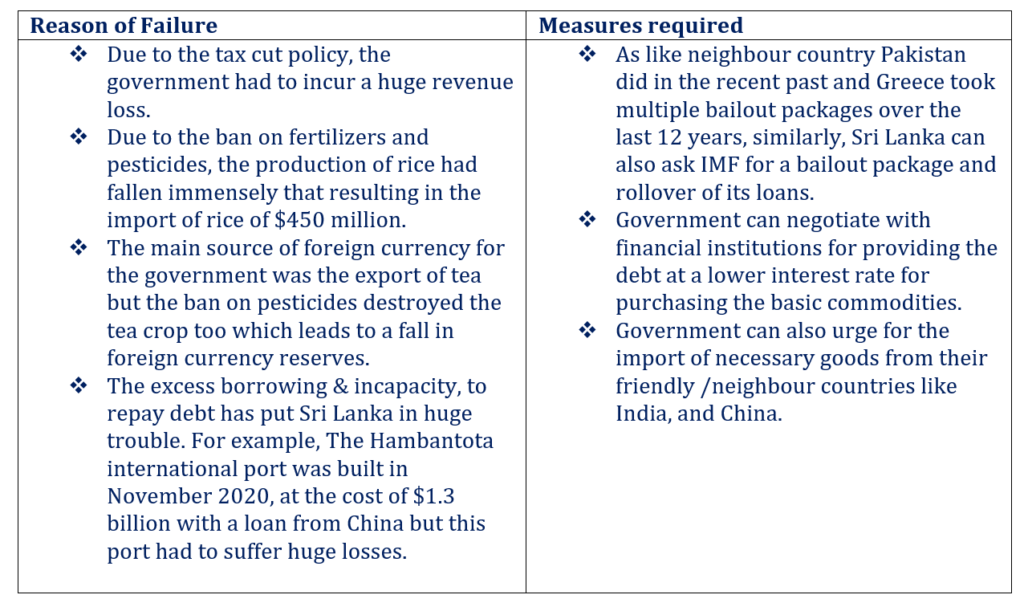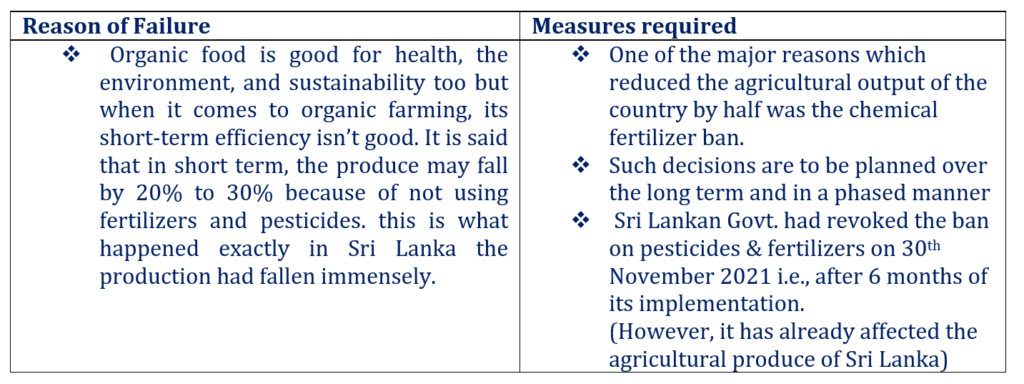
A state of emergency has been declared in Sri Lanka, Social media websites have been banned, and A curfew has been imposed across the country. Before this, thousands of people were out on the streets protesting. There is a scarcity of fuel and food in the country. People are enraged. And Sri Lanka is going through a major economic crisis. The ongoing 2019–2022 Sri Lankan economic crisis is characterized by economic mismanagement, a rise in external debt, depleting foreign exchange reserves, a weakened currency, and rising prices.
II.Reason that leads Sri Lanka into a worse ever economic crisis:
- Tax cut and Money creation:
To increase the purchasing power in hands of the people, the Government of Sri Lanka made large tax cuts that impacted its revenue and fiscal policy. These cuts were mainly- increase in free tax threshold resulting in a decline in over 33.5% of registered taxpayers, reducing VAT to 8%, reducing corporate tax from 28% to 24%, the abolishment of the Pay As You Earn (PAYE) scheme and the 2% “nation-building tax” which financed infrastructure development, that resulted in huge revenue loss. The Sri Lankan government was aware of revenue loss because of the large tax cut but they considered it as an “Investment” with a view that it will increase the purchasing power of the people which will lead to economic growth.

2. External Debt:
Till February, the country was left with only $2.31 billion in its reserves but faced debt repayments of around $4 billion in 2022, including a $1 billion international sovereign bond (ISB) maturing in July.
The government also repaid US$500 million in International Sovereign Bonds which was due in January 2022 despite growing opposition from economic analysts and experts who all advised the government to postpone the ISB payment to preserve the foreign reserves.
Quick economic decisions & implementation of various policies was the major reason behind the revenue loss and leads to default in repayment of debt & at the same time resulted in a decline in its credit rating which ultimately creates a barrier to raising additional debt for further development.

3. Agricultural crisis:
In the 2019 elections, President Rajapaksa had promised that he would convert the country’s agriculture to organic. In this campaign, he spoke about how over 10 years he would shift agriculture to 100% organic. And then he came up with a sudden decision.
Overnight there was a nationwide ban on synthetic fertilizers and pesticides. He wanted the country to overnight become a country that practices 100% organic agriculture. There was another reason to make this decision to cut down imports. Since synthetic fertilizers and pesticides were imported into the country. The Government thought to save some money by banning the import of fertilizers and Pesticides.

4. Tourism:
The country’s tourism sector represented over one-tenth of the GDP of Sri Lanka. The sector was negatively affected by the 2019 Easter bombings, and the COVID-19 pandemic prevented recovery.

Impact of Crisis
- Electricity and fuel shortage:
The economic crises have resulted in a decline in electricity, fuel, and cooking gas consumption, resulting from shortages. Finance Minister Basil Rajapaksa urged all government authorities to switch off all street lights in an attempt to conserve electricity. Nearly 1000 bakeries have been shut as a response to shortages of cooking gas.
2. Inflation
Till February 2022, inflation was 17.5%. The year-on-year increase in inflation for food was 24.7%. while non-food items saw an 11% rate. The year-on-year change (Feb 2021 to Feb 2022) for local red chilies increased by 60%, local potato by 74.8%, and rice by 64%.
3. Exports:
Due to the prevailing economic crisis in Sri Lanka; leading textile brands including Zara, Mango and H&M have diverted their attention from Sri Lanka to India to place their orders. It has seen a huge export demand for tea and textiles in India due to the worsening economy in Sri Lanka.
IV.Impact on India of economic crisis in Sri Lanka:
For any country, crisis and instability are bad for its citizens. But it also has a bad impact on the neighbouring countries. If the situation in Sri Lanka continues to worsen, there will be more refugees in India. There may be several effects of this on India as well like China may gain its influence in the island country since Sri Lankan government has asked for $2.5 billion in emergency aid. Due to the absence of labour and non-availability of transportation facility, many of our shipments lying at Sri Lankan port.
Authors:
Vikash Parashar
Associate Consultant | vikash.parashar@masd.co.in | LinkedIn Profile
Shubham Yadav
Associate Consultant | shubham.yadav@masd.co.in | LinkedIn Profile


